Lightweight Design Optimization of Nonpneumatic Tires under Radial-Stiffness Constraints
Abstract
:1. Introduction
2. Design Problem and Optimization Method
2.1. Design-Problem Statement
2.2. Sensitivity Analysis for Thickness
2.3. Sensitivity with Process Constraints
2.4. Sensitivity Filtering
2.5. Update Rule for Thickness
3. Automotive NPT
3.1. The Geometry of the Fibonacci-Spoke NPT
3.2. NPT Manufacturing
3.3. FE Model and Experimental Validation
4. Thickness Optimization
4.1. Thickness Optimization in Tire Radial Direction
4.2. Thickness Optimization in Tire-Width Direction
4.3. Experimental Validation for Optimized Spoke
5. Conclusions
Author Contributions
Funding
Institutional Review Board Statement
Informed Consent Statement
Data Availability Statement
Conflicts of Interest
References
- Zhang, Z.Z.; Lv, J.G.; Song, B.; Guo, S.Y.; Gao, F. Development of non-pneumatic tire technology. In Applied Mechanics and Materials; Trans Tech Publications Ltd.: Wollerau, Switzerland, 2013; Volume 427, pp. 191–194. [Google Scholar] [CrossRef]
- Bras, B.; Cobert, A. Life-cycle environmental impact of Michelin Tweel® tire for passenger vehicles. SAE Inte. J. Passeng. Cars-Mech. Syst. 2011, 4, 32–43. [Google Scholar] [CrossRef]
- Rhyne, T.B.; Thompson, R.H.; Cron, S.M.; DeMino, K.W. Non-Pneumatic Tire. U.S. Patent 7,201,194, 10 April 2007. [Google Scholar]
- Manesh, A.; Tercha, M.; Anderson, B.; Meliska, B.J.; Ceranski, F. Tension-Based Non-Pneumatic Tire. U.S. Patent 8,109,308, 7 February 2012. [Google Scholar]
- Manesh, A.; Tercha, M.J.; Meliska, B.; Ceranski, F.; Howland, G.; Stark, L.; Hauch, K.; Petersen, T. Tension-Based Non-Pneumatic Tire. U.S. Patent 8,176,957, 15 May 2012. [Google Scholar]
- Mun, D.Y.; Kim, H.J.; Choi, S.J. Non-Pneumatic Tire. EP Patent EP2428369, 14 March 2012. [Google Scholar]
- Kim, Y.-H. Non-Pneumatic Tire Having Improved Riding Comfort. CN Patent 105,365,478 A, 2 March 2016. [Google Scholar]
- Jang, I.G.; Sung, Y.H.; Yoo, E.J.; Kwak, B.M. Pattern design of a non-pneumatic tyre for stiffness using topology optimization. Eng. Optim. 2012, 44, 119–131. [Google Scholar] [CrossRef]
- Zhao, Y.; Du, X.; Lin, F.; Wang, Q.; Fu, H. Static stiffness characteristics of a new non-pneumatic tire with different hinge structure and distribution. J. Mech. Sci. Technol. 2018, 32, 3057–3064. [Google Scholar] [CrossRef]
- Ganniari-Papageorgiou, E.; Chatzistergos, P.; Wang, X. The influence of the honeycomb design parameters on the mechanical behavior of non-pneumatic tires. Int. J. Appl. Mech. 2020, 12, 2050024. [Google Scholar] [CrossRef]
- Zang, L.; Wang, X.; Yan, P.; Zhao, Z. Structural design and characteristics of a non-pneumatic tire with honeycomb structure. Mech. Adv. Mater. Struct. 2021, 1–8. [Google Scholar] [CrossRef]
- Zhang, Z.; Fu, H.; Zhao, Q.; Tan, D.; Yang, K. Pattern design and performance analysis of a flexible spoke bionic non-pneumatic tire. J. Braz. Soc. Mech. Sci. Eng. 2021, 43, 41. [Google Scholar] [CrossRef]
- Wu, T.; Li, M.; Zhu, X.; Lu, X. Research on non-pneumatic tire with gradient anti-tetrachiral structures. Mech. Adv. Mater. Struct. 2021, 28, 2351–2359. [Google Scholar] [CrossRef]
- Lux, F.; Stumpf, H. Light-Weight Tire Concept. Tire Sci. Technol. 1996, 24, 119–131. [Google Scholar] [CrossRef]
- Yang, R.J.; Fu, Y.; Li, G. Application of Tailor Rolled Blank in Vehicle Front End for Frontal Impact (No. 2007-01-0675); SAE Technical Paper; SAE: Evanston, IL, USA, 2007. [Google Scholar] [CrossRef]
- Liu, X.H. Prospects for variable gauge rolling: Technology, theory and application. J. Iron Steel Res. Int. 2011, 18, 1–7. [Google Scholar] [CrossRef]
- Merklein, M.; Johannes, M.; Lechner, M.; Kuppert, A. A review on tailored blanks—Production, applications and evaluation. J. Mater. Process. Technol. 2014, 214, 151–164. [Google Scholar] [CrossRef]
- An, X.; Gao, Y.; Fang, J.; Sun, G.; Li, Q. Crashworthiness design for foam-filled thin-walled structures with functionally lateral graded thickness sheets. Thin-Walled Struct. 2015, 91, 63–71. [Google Scholar] [CrossRef]
- Yu, L.; Gu, X.; Qian, L.; Jiang, P.; Wang, W.; Yu, M. Application of tailor rolled blanks in optimum design of pure electric vehicle crashworthiness and lightweight. Thin-Walled Struct. 2021, 161, 107410. [Google Scholar] [CrossRef]
- Cheng, W.; Zhang, H.; Fu, S.; Xie, H.; Tang, Z.; Zhu, Z. A process-performance coupled design method for hot-stamped tailor rolled blank structure. Thin-Walled Struct. 2019, 140, 132–143. [Google Scholar] [CrossRef]
- Duan, L.; Xiao, N.C.; Li, G.; Cheng, A.; Chen, T. Design optimization of tailor-rolled blank thin-walled structures based on-support vector regression technique and genetic algorithm. Eng. Optim. 2017, 49, 1148–1165. [Google Scholar] [CrossRef]
- Gao, D.; Li, X.; Chen, H. Application of improved particle swarm optimization in vehicle crashworthiness. Math. Probl. Eng. 2019, 2019, 8164609. [Google Scholar] [CrossRef] [Green Version]
- Lu, R.; Gao, W.; Hu, X.; Liu, W.; Li, Y.; Liu, X. Crushing analysis and crashworthiness optimization of tailor rolled tubes with variation of thickness and material properties. Int. J. Mech. Sci. 2018, 136, 67–84. [Google Scholar] [CrossRef]
- Yang, J.; Zhang, S. Crashworthiness Design of Bumper Beam Structure with Tailor Rolled Using Nonlinear Topology Optimization Method. China Mech. Eng. 2017, 28, 2109. [Google Scholar]
- Duan, L.; Jiang, H.; Li, H.; Xiao, N. Crashworthiness optimization of VRB thin-walled structures under manufacturing constraints by the eHCA-VRB algorithm. Appl. Math. Model. 2020, 80, 126–150. [Google Scholar] [CrossRef]
- Shi, D.; Watanabe, K.; Naito, J.; Funada, K.; Yasui, K. Design optimization and application of hot-stamped B pillar with local patchwork blanks. Thin-Walled Struct. 2022, 170, 108523. [Google Scholar] [CrossRef]
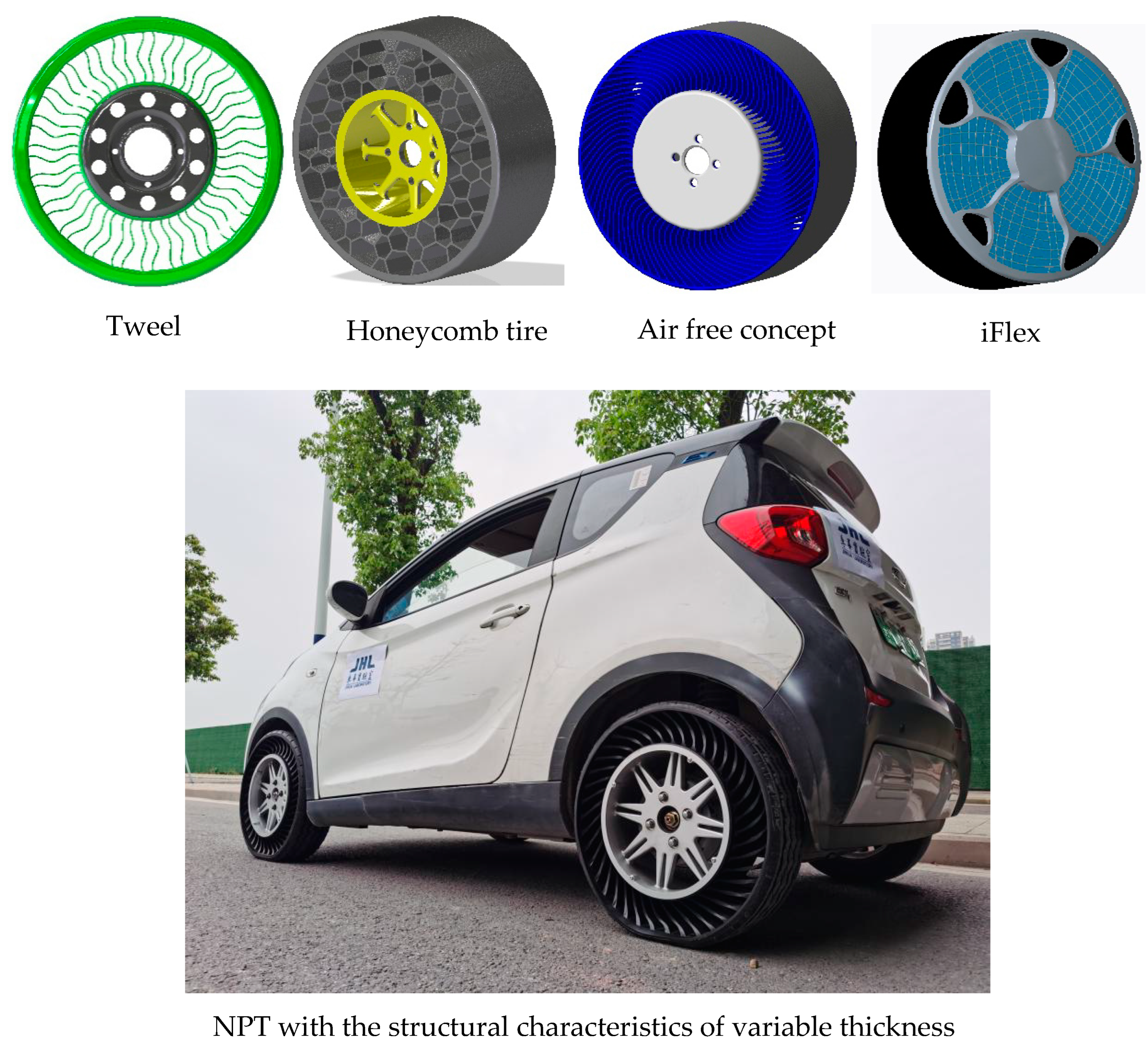
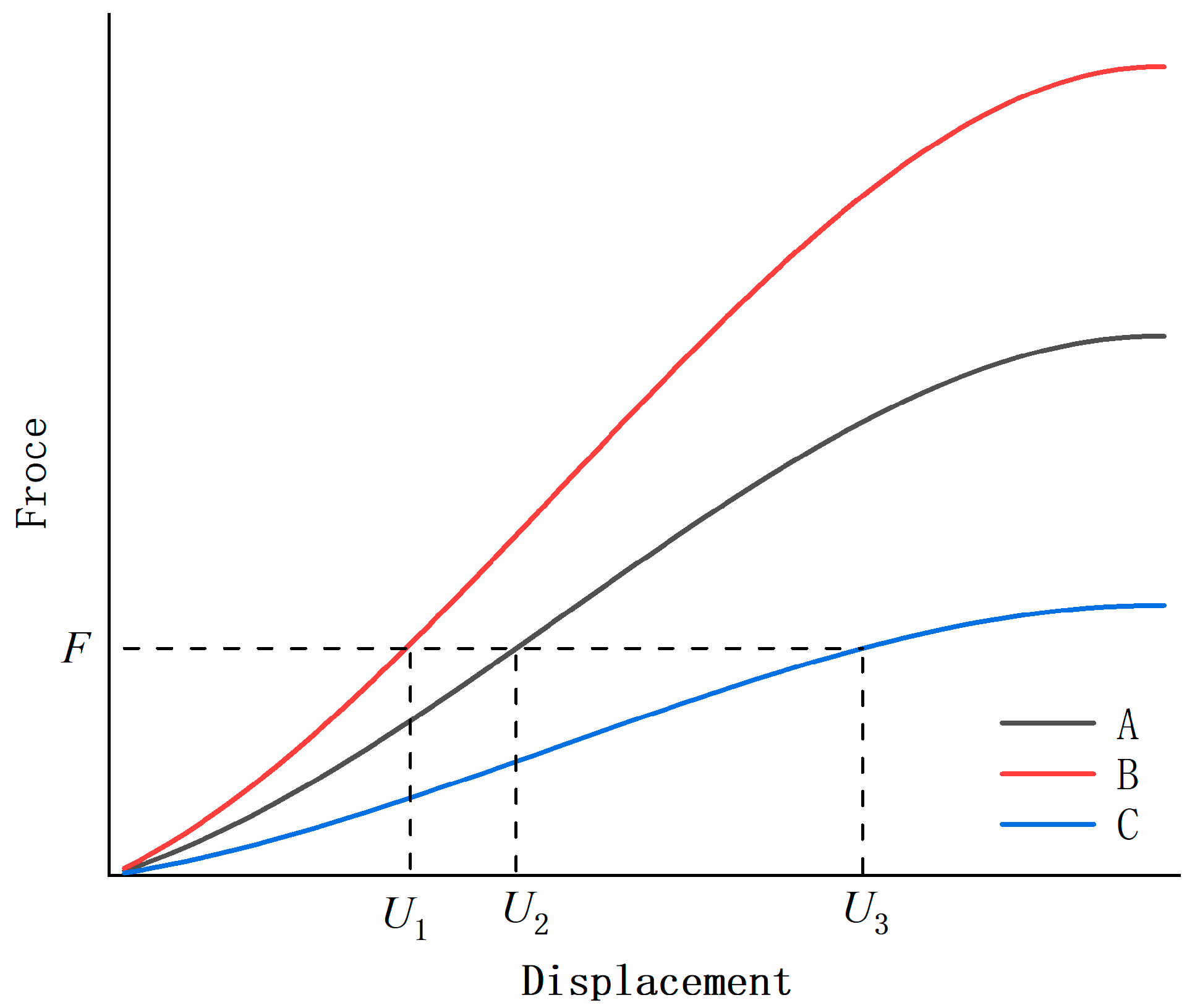

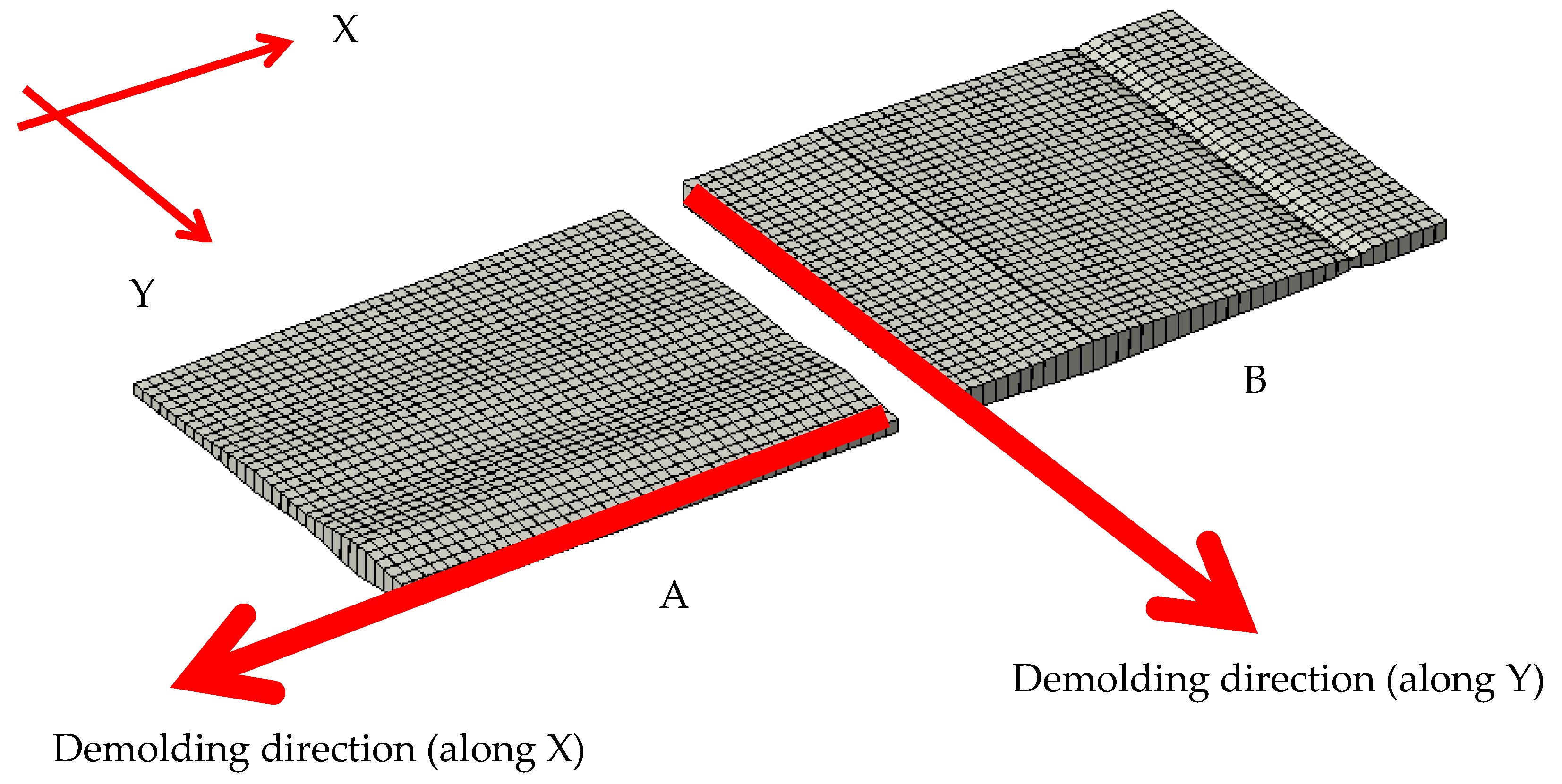

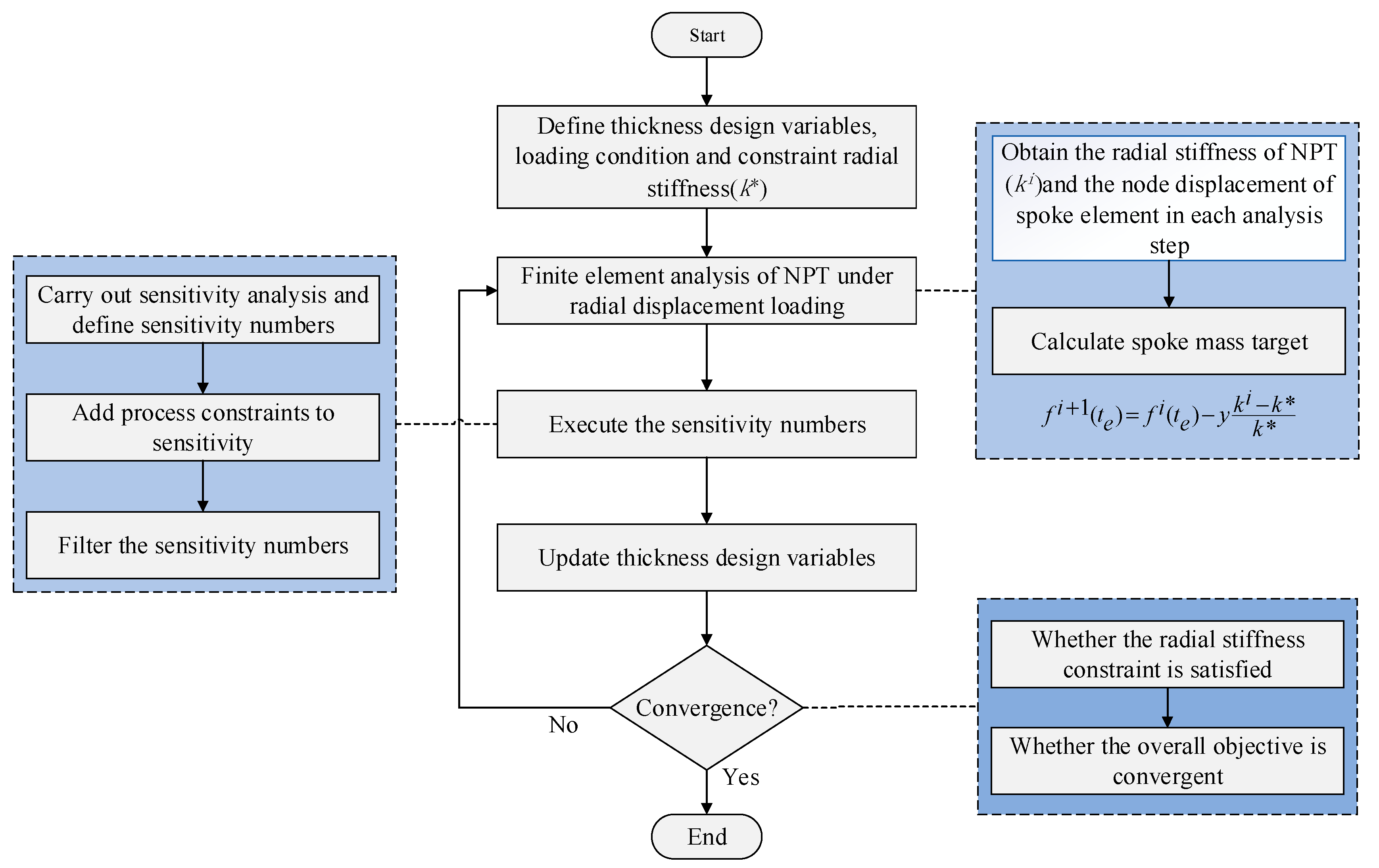
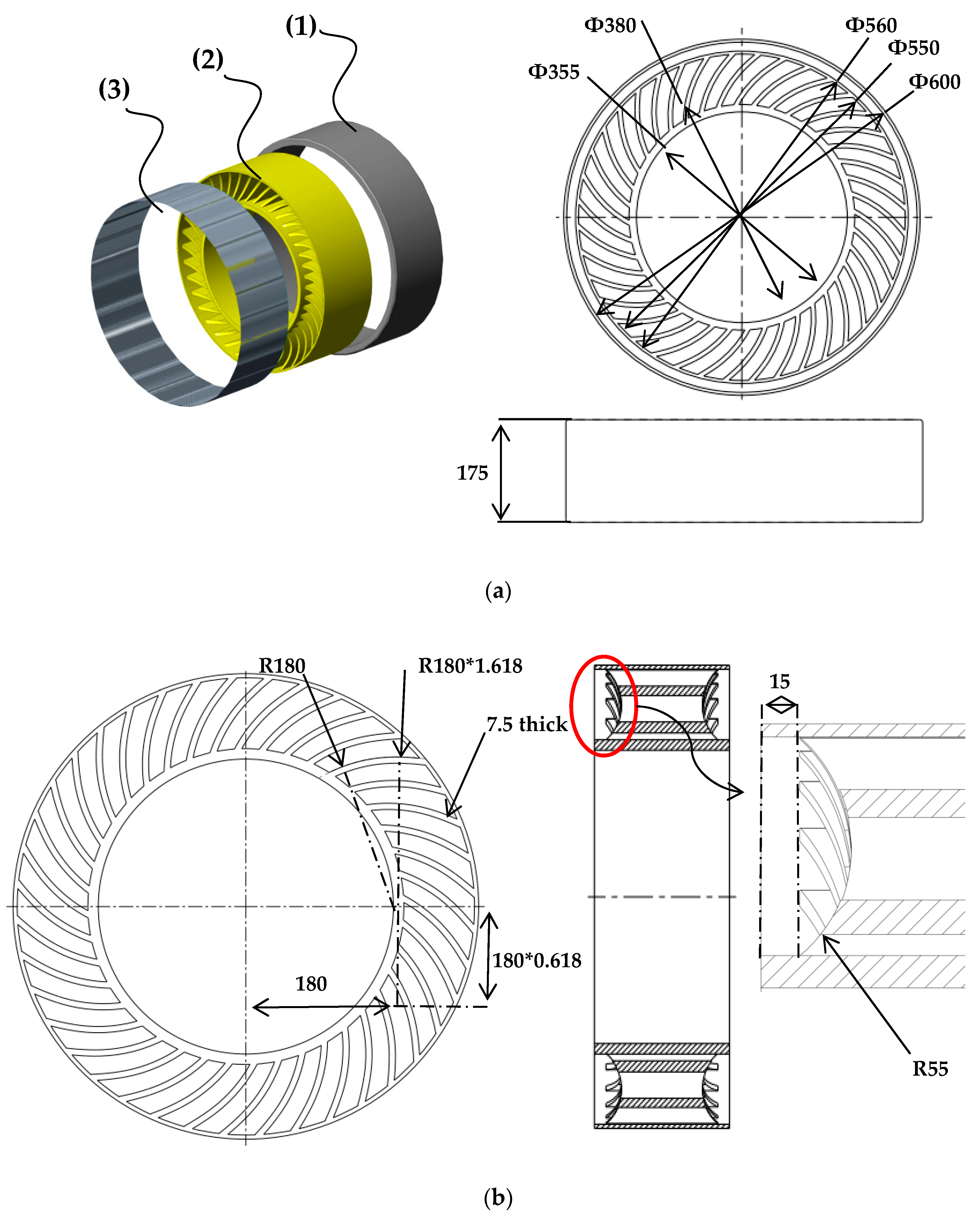
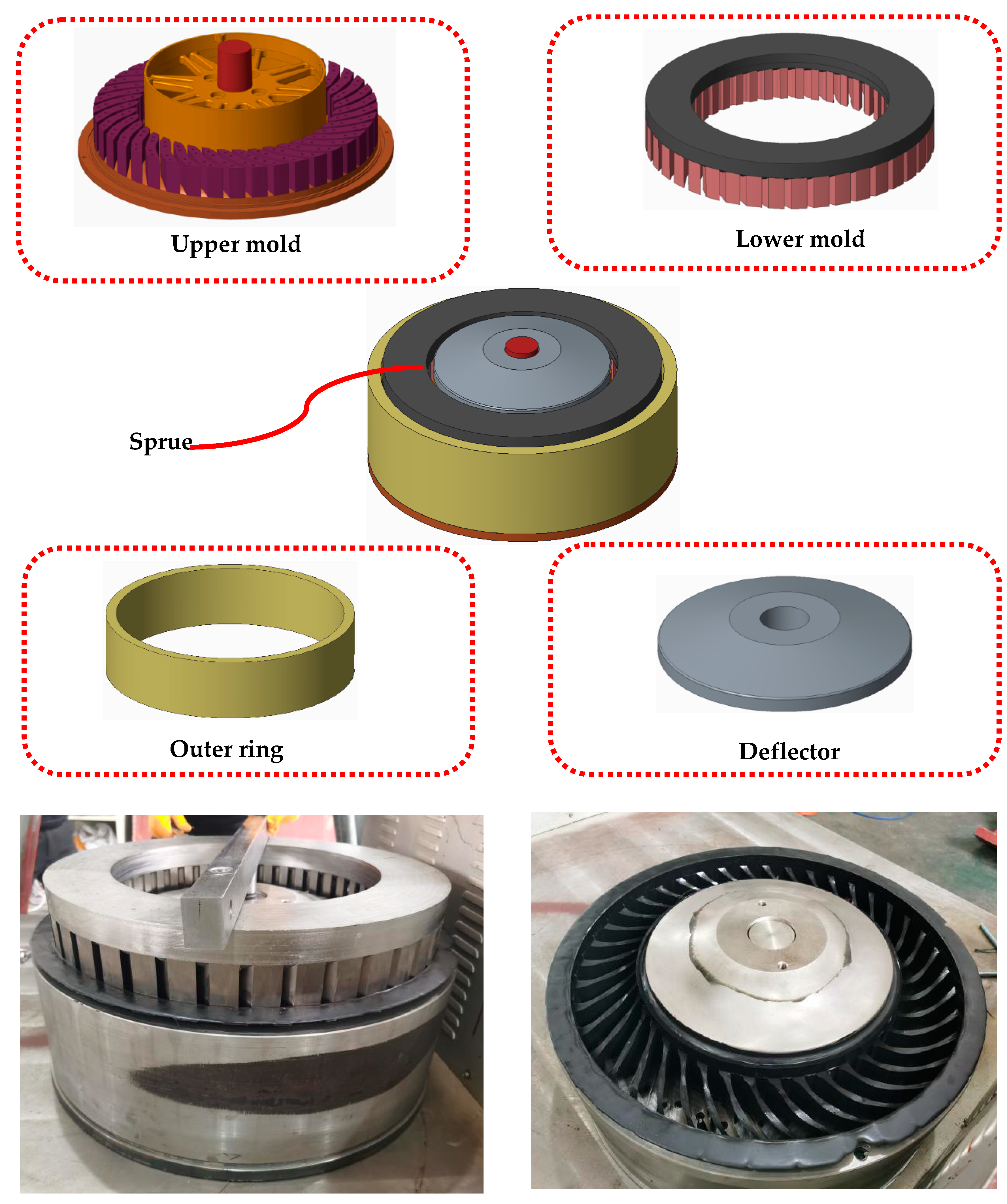
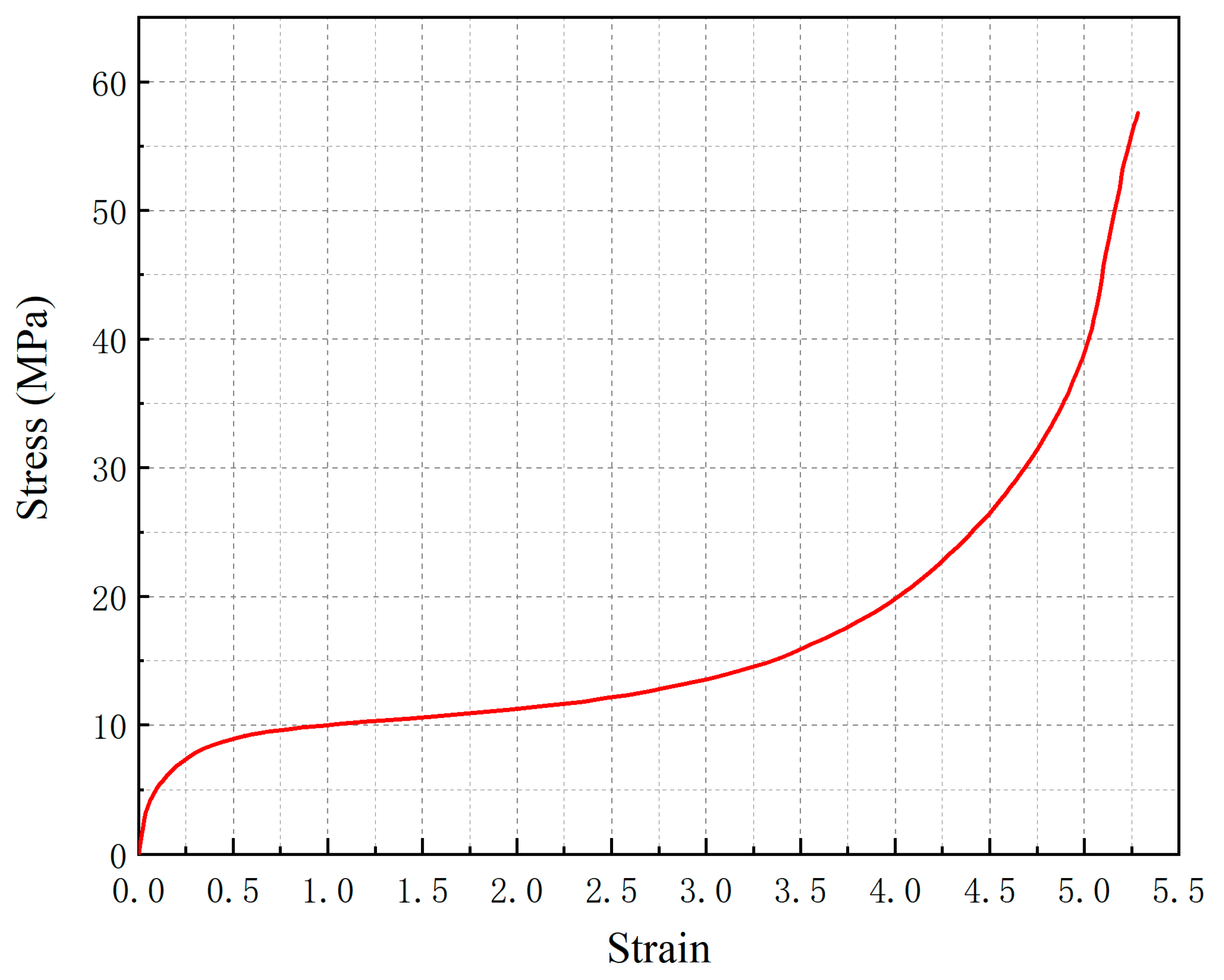

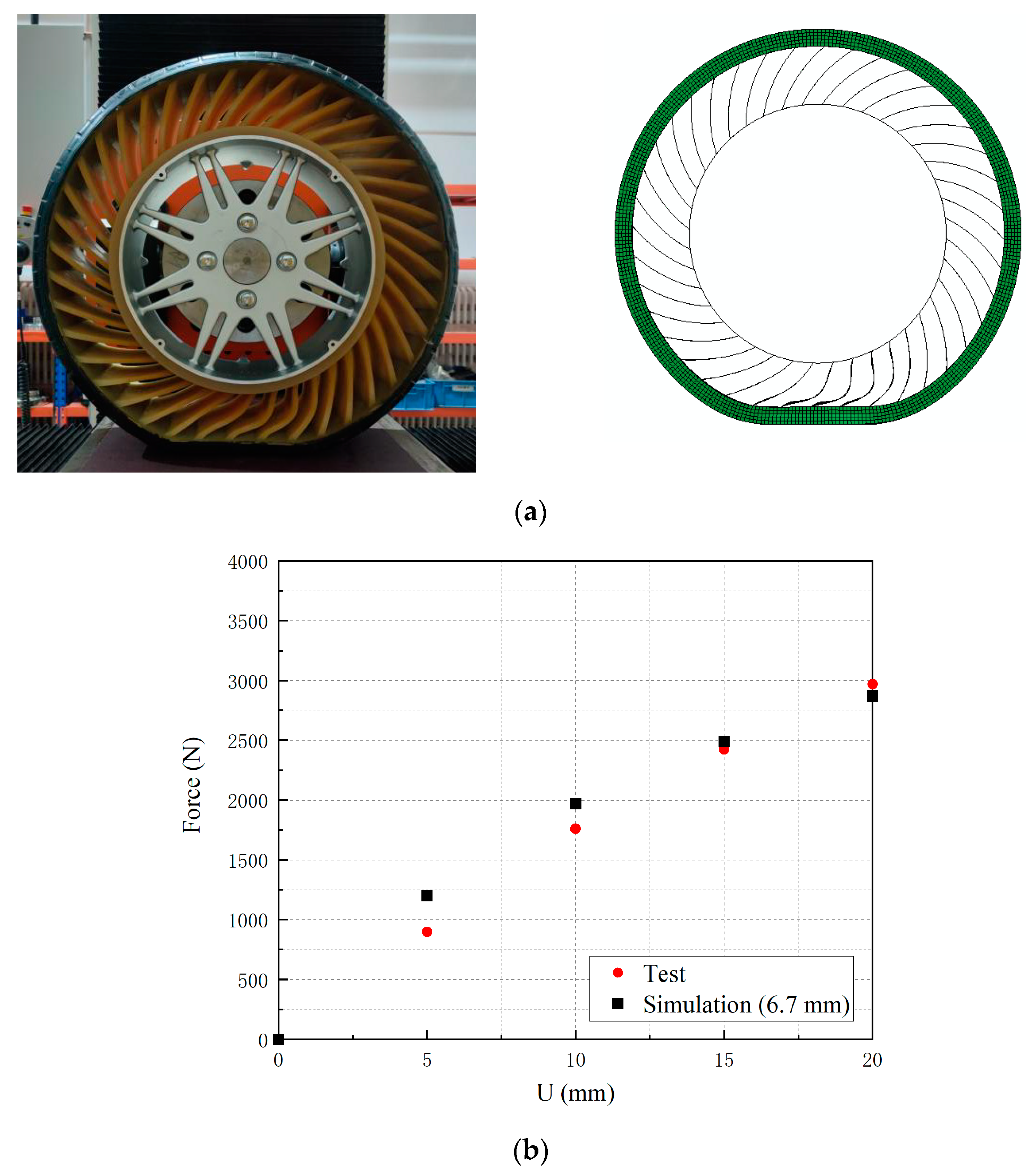



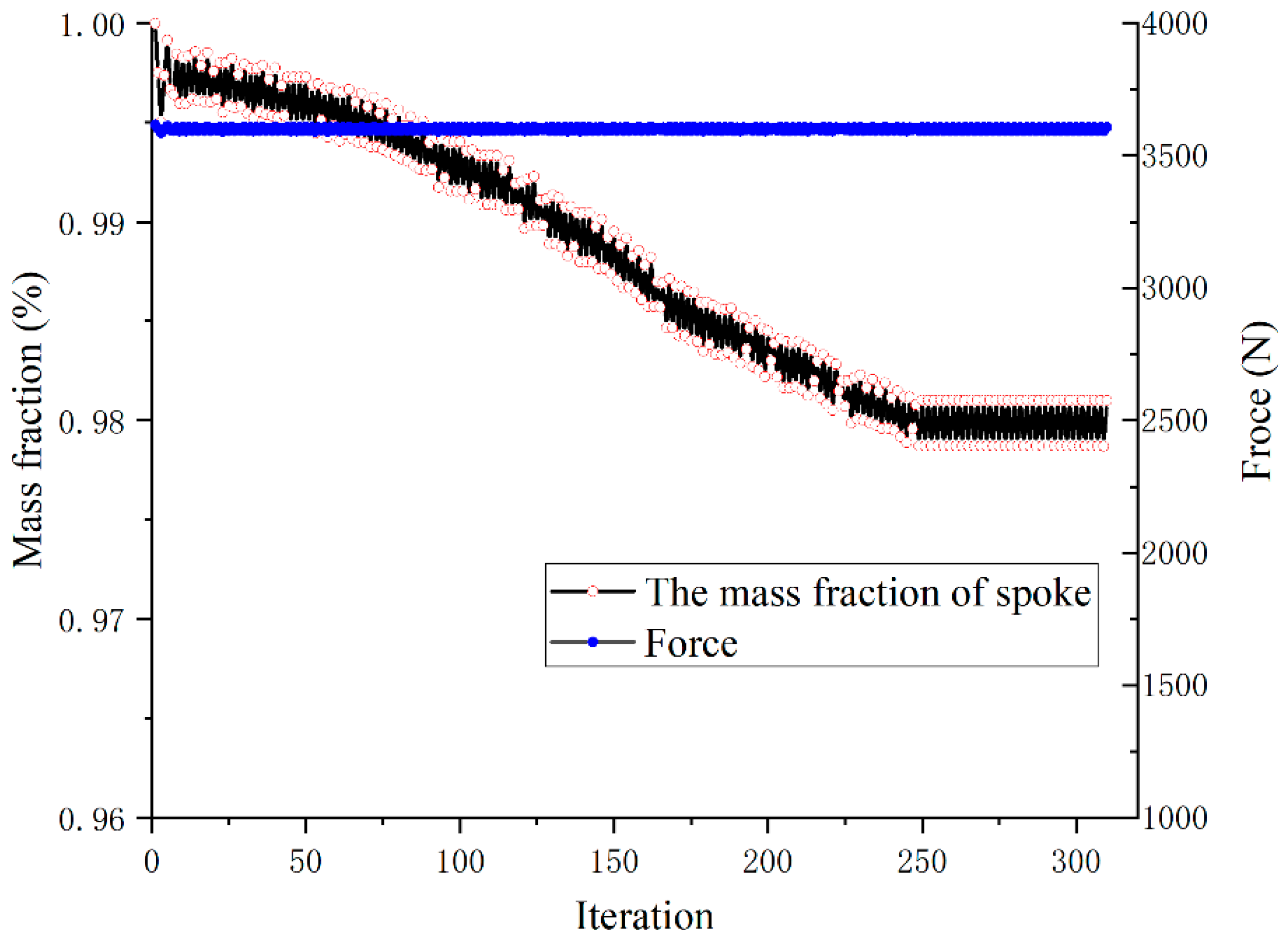

Publisher’s Note: MDPI stays neutral with regard to jurisdictional claims in published maps and institutional affiliations. |
© 2022 by the authors. Licensee MDPI, Basel, Switzerland. This article is an open access article distributed under the terms and conditions of the Creative Commons Attribution (CC BY) license (https://creativecommons.org/licenses/by/4.0/).
Share and Cite
Xu, T.; Yang, J.; Zhu, L.; Gao, F. Lightweight Design Optimization of Nonpneumatic Tires under Radial-Stiffness Constraints. Machines 2022, 10, 889. https://doi.org/10.3390/machines10100889
Xu T, Yang J, Zhu L, Gao F. Lightweight Design Optimization of Nonpneumatic Tires under Radial-Stiffness Constraints. Machines. 2022; 10(10):889. https://doi.org/10.3390/machines10100889
Chicago/Turabian StyleXu, Ting, Jianglin Yang, Liangliang Zhu, and Fei Gao. 2022. "Lightweight Design Optimization of Nonpneumatic Tires under Radial-Stiffness Constraints" Machines 10, no. 10: 889. https://doi.org/10.3390/machines10100889



